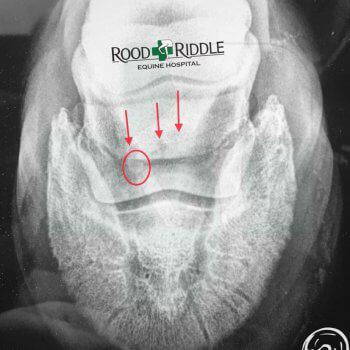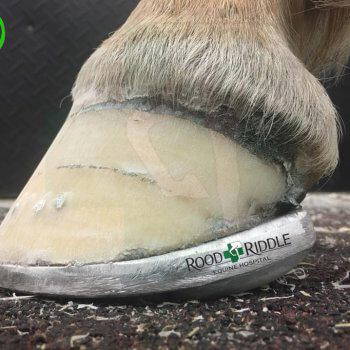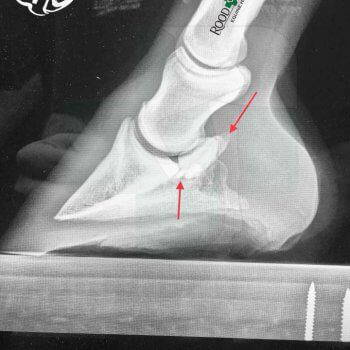Navicular syndrome, often called navicular disease, is a syndrome of lameness problems in horses. It most commonly describes an inflammation or degeneration of the navicular bone and its surrounding tissues, usually on the front feet. It can lead to significant and even disabling lameness.
What is Navicular?
Knowledge of equine forelimb anatomy is especially useful for understanding navicular syndrome. The navicular bone lies behind the coffin bone and under the small pastern bone. The deep digital flexor (DDF) tendon runs down the back of the cannon and soft tissue in that area and under the navicular bone before attaching to the back of the coffin bone. The DDF tendon flexes the coffin joint, and the navicular bone acts as a fulcrum that the DDF tendon runs over.
There is no single known cause of navicular syndrome, although there are many theories and several primary factors. The first factor is compression of the navicular bone under the DDF tendon and the back of the small pastern bone. Associated biochemical changes have led some researchers to conclude that there are elements in navicular disease common to osteoarthritis, and to suggest similar therapeutic regimes. Another main factor is the tension placed on the ligaments that support the navicular bone. Some experts believe that the degenerative process begins with excess tension placed on these ligaments, causing strain and inflammation.
 No single treatment works for all cases, probably because there is no single cause for all cases. Different horses may respond in different ways to a given technique, so the farrier, owner, and veterinarian should work as a team to formulate a plan and to adapt if the initial plan is not effective.
No single treatment works for all cases, probably because there is no single cause for all cases. Different horses may respond in different ways to a given technique, so the farrier, owner, and veterinarian should work as a team to formulate a plan and to adapt if the initial plan is not effective.
Search
Recent Articles
Categories
- Advice Hub
- Athlete
- Carriage Driving
- Dentistry
- Dressage
- Endurance
- Eventing
- Farrier
- Featured
- Featured Horse Ads
- Featured Posts
- Horse Racing
- Horse's Mouth
- Horseball
- Hunting
- Le Trec
- Leisure Riders
- Mounted Games
- Nutrition
- Polo
- Polocrosse
- Reining
- Rescue & Rehabilitation
- Show Jumping
- Showing
- Tack Room
- Team Chasing
- The Pony Club
- Therapy
- Training
- Vaulting
- Veterinary






